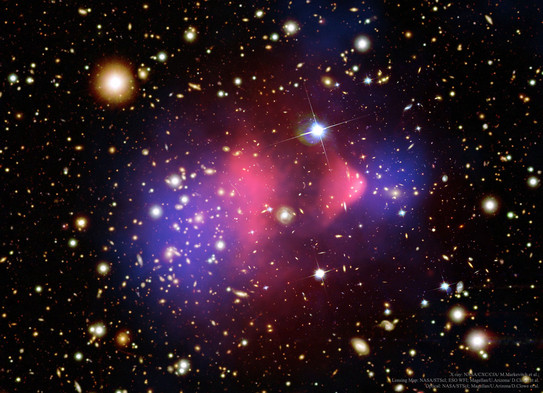Dark Matter
Clear evidence for the presence of large amounts of dark matter was found as early as the 1930s. To date, however, no fundamental breakthrough has been made in understanding the nature of dark matter or in identifying a specific candidate particle. Unlike visible matter, dark matter (almost) does not interact electromagnetically, which of course makes its direct detection by classical astronomical methods enormously difficult. So far, dark matter has been detected through its gravitational interaction with conventional matter.

To study it in more detail and gain new insights, the development of advanced dark matter detection capabilities is a current research topic. One such channel is indirect searches for decay or annihilation products of hypothetical dark matter particles with high-energy astroparticle physics experiments.
In Dortmund, we are trying to advance the possibilities of indirect detection methods using neutrinos in the IceCube experiment and photons with the MAGIC and CTA telescopes by theoretical preliminary work, by planning and performing measurement campaigns, and by analyzing observational data. In addition, the theoretical limits for experimental possibilities for the detection of dark matter are investigated with simulations.
Recent topics covered in the dark matter search include:
- Effect of velocity modification of the dark matter profile on the capture rate in the Earth or Sun with respect to current neutrino telescopes.
- Determination of expected gamma-ray flux from dark matter annihilation for the dwarf galaxy Ursa Major II.
- Calculations of expected gamma-ray fluxes from dark matter annihilation using the example of promising dwarf galaxies in the Milky Way halo.
Are you interested in writing a bachelor or master thesis on dark matter with us? Then please contact us by mail or just drop by at the chair!

![[Translate to English:] [Translate to English:]](/storages/app-physik/_processed_/3/a/csm_APPGroupphoto2023_001_small_858e4405eb.jpg)


